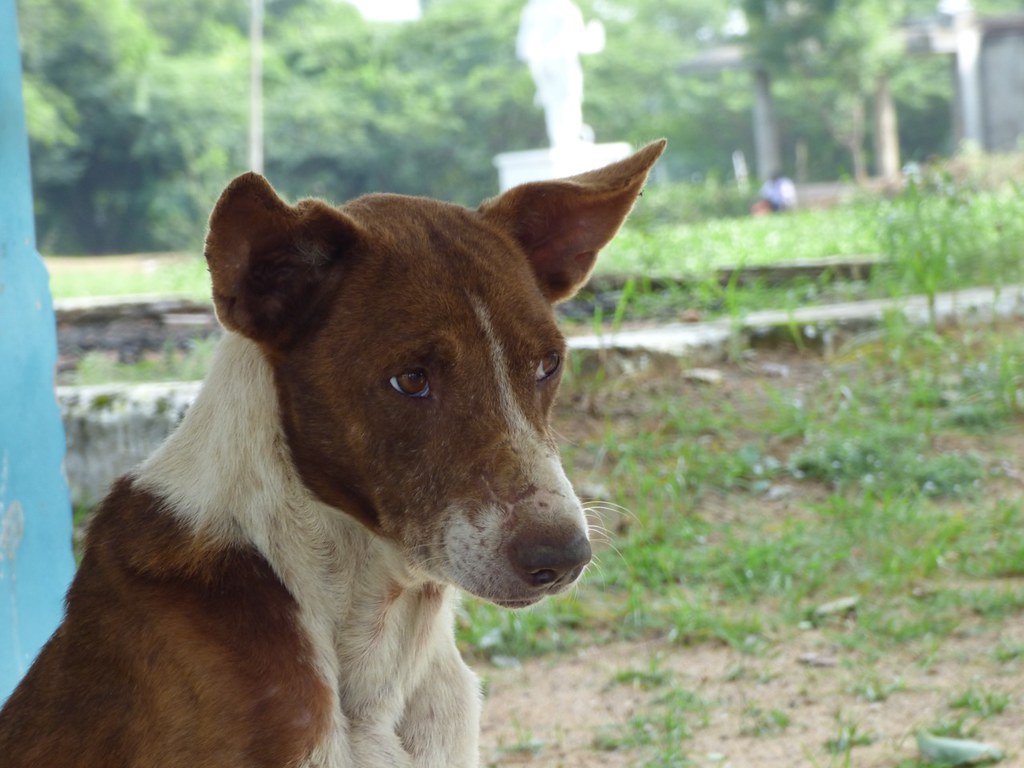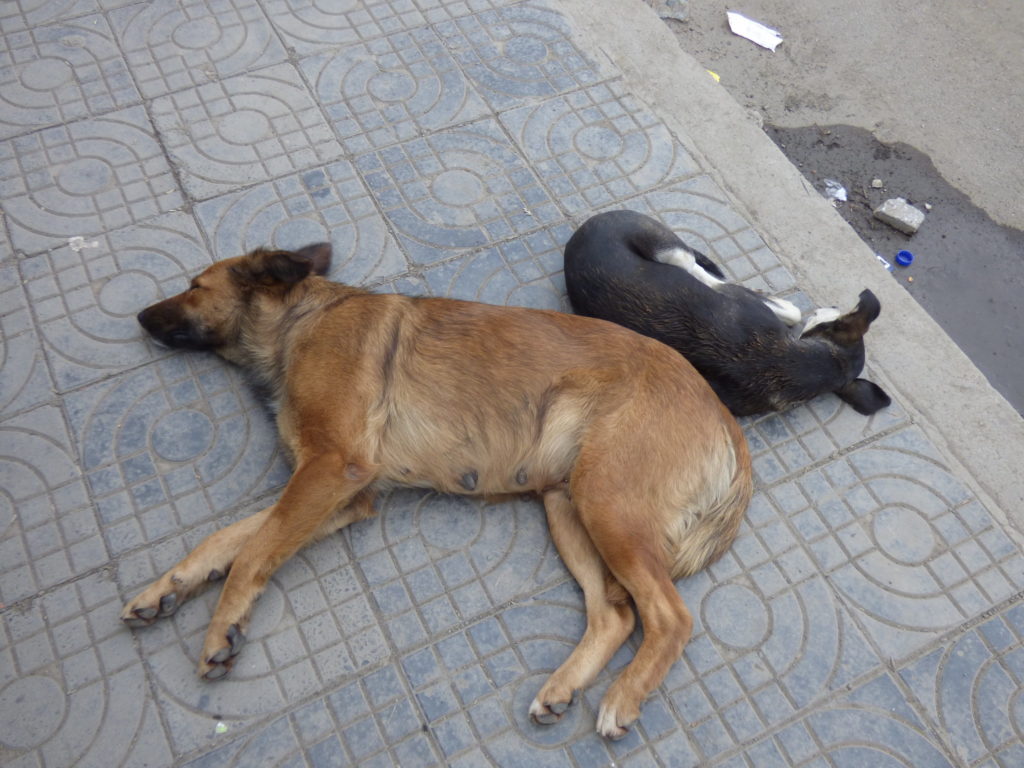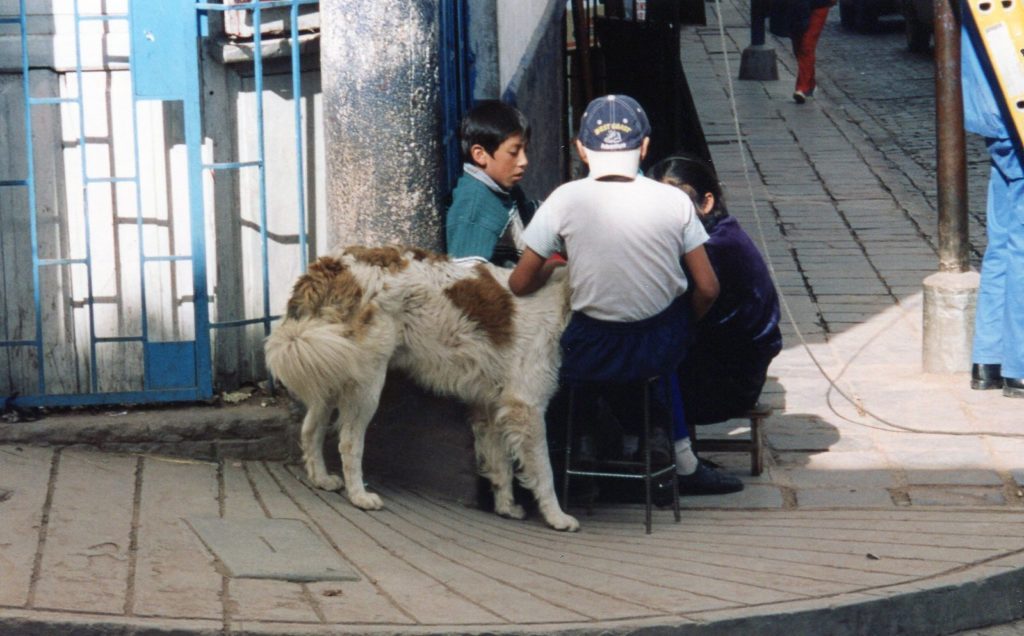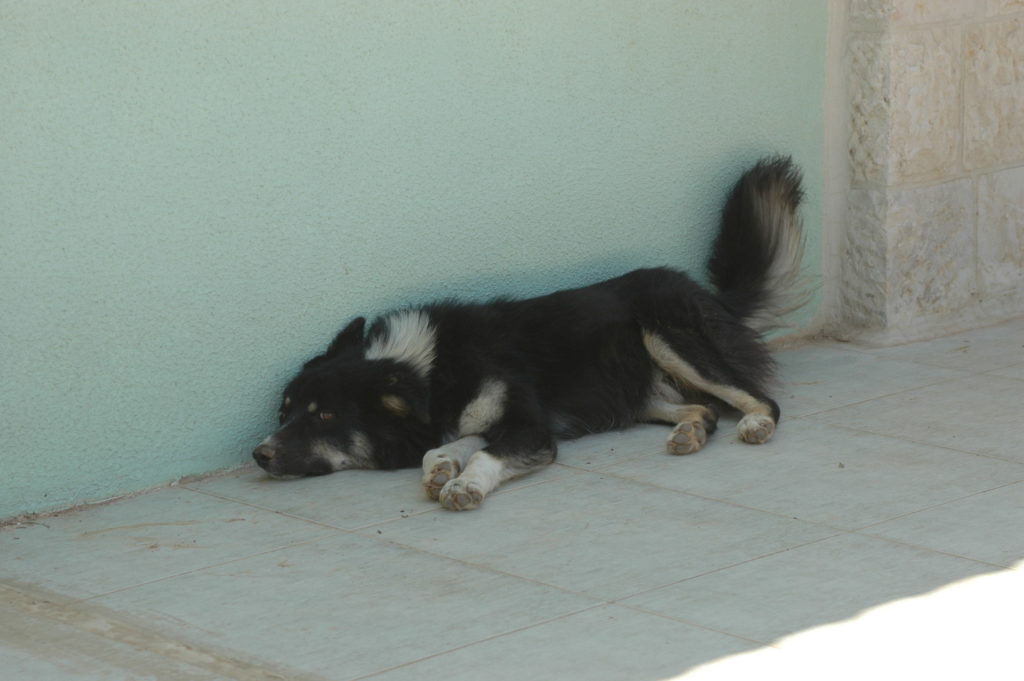Where dogs roam free, they also suffer—and so do people. Dog homelessness (or overpopulation, depending on how the issue is framed) is a global problem with serious ramifications for both dog welfare and human public health. While big strides have been made to improve the situation in some places, the World Health Organization still estimates the global homeless dog population at over 200 million. Many organizations are now working to address dog homelessness, but their approaches vary, and real data about their effectiveness are hard to come by.
This fragmentation and lack of data is what the Global Dog Campaign hopes to address. The campaign was launched by WellBeing International (WBI), a relatively new NGO with animal welfare veteran Dr. Andrew Rowan at the helm as President. With a number of talented experts on their team and a focus on the holistic well-being of animals, humans, and the environment, WBI hopes to help coordinate a more effective global movement to end dog hardship and homelessness.
In an interview with Dr. Andrew Rowan, we discussed the logistics of the Global Dog Campaign, why it’s needed, and how data can help improve the well-being of both dogs and human communities.
Dylan Forest: WellBeing International’s Global Dog Campaign has an ambitious goal: to “end dog hardship and homelessness across the world.” Why did WellBeing International decide to focus on this issue in particular?
Dr. Andrew Rowan: The well-being of all animals (and people and the environment) is a fundamental value for how WellBeing International approaches the world and the task before it. That said, as a new NGO, we clearly must focus our efforts and projects. Members of the WBI team have had decades of experience identifying and addressing well-being challenges for dogs (and cats) and the communities that house them. We felt that the growth of global animal protection and projects managing dogs (and cats) around the world provided a great opportunity to make significant progress in ending dog (and cat) homelessness.

WBI identified a need where greater attention to the collection and reporting of data on dog populations and their trends could make a significant difference for dogs, people and their communities. We also saw that human-dog interactions have been changing in a positive direction (in some cases, changing dramatically) for both people and dogs over the past ten to twenty years, and yet not much attention was being paid to these changes nor to their possible impact on people, communities and dogs across the globe.
One of the preliminary goals of this campaign is to gather data about dog homelessness and existing efforts to address it. Why is this data important for your larger goals? Is there a scarcity of data available specifically regarding the effectiveness of various responses to dog overpopulation?
In WBI’s approach, it is essential that program design, implementation and then evaluation is built upon and informed by the collection and reporting of accurate data followed by sound analysis. However, there is a surprising lack of data, both in the developed world and elsewhere, demonstrating that specific dog (and cat) management approaches are effective. There are also no data storage systems where people can record what their programs are accomplishing or where others can find guidance on how to design their own projects. WBI aims to raise the global awareness of the importance of systematic data collection, data storage and data evaluation to inform and guide effective dog (and cat) management for the benefit of the animals and the communities they inhabit.
There is, unfortunately, a global shortage of data addressing companion animal management, especially for projects implemented for longer than five years. There are only a handful of time series data sets that cover more than a decade. Given that addressing the dog homelessness issue will require at least ten years and probably longer, the need for, and use of time-series data is going to be very important.
In low- and middle-income countries across the world, it is easy to find alarmist reports about the growing stray dog (or stray cat) population. However, when actual surveys are conducted, these claims are mostly unsupported. A few years ago, experienced colleagues surveyed the number of street dogs in an Indian city and estimated there were around 5,800 street dogs. The municipality who had contracted the survey team refused to pay for the survey because, they claimed (without any supporting data) that there were at least 50,000 street dogs in the city. In the USA, conservation biologists claim that outdoor cat numbers are increasing dramatically but the actual data on cat intakes into US shelters indicate that annual intakes (that may reflect just how many stray and feral cats there are in the country) have dropped by more than 50% since the 1970s.

Today, greater attention is being paid to data on dog and cat populations but there are still many gaps and many extravagant and unhelpful claims that complicate attempts to identify appropriate management actions to address homeless and unwanted dogs and cats.
Some efforts to reduce homeless dog populations include culling dogs. What are your thoughts on culling as a response to dog overpopulation, and will the Global Dog Campaign be gathering data about these interventions and their effectiveness as well?
The World Health Organization now states that culling dogs is an ineffective approach to dog management and rabies reduction. This is largely because it is very hard to reduce the roaming dog population sufficiently to prevent a rebound within a year or two. These days, dog culling produces a significant negative public reaction and so municipalities are increasingly looking for alternative management options. Culling still occurs, but there is no data demonstrating that it is an effective response to reduce dog bites, zoonoses or nuisance. At this time, WB’s selected flagship projects do not include communities where dog culls are being implemented.
Higher populations of homeless dogs are associated with low and middle-income countries (LMICs). Why do you think we see a link between more homeless dogs and lower incomes?
The available data do not necessarily link dog homelessness to low average GDP. There are large variations in the number of “homeless” dogs per 1,000 people. Thus, in Pakistan and Afghanistan, the number of “homeless” dogs per 1,000 people ranges from around 10 to 40. In India, the number of homeless street dogs ranges from around 20 to 100. In the Philippines, there are regions where there are as many as 3-400 street dogs (not necessarily all “homeless”) and in Latin America, some rural areas have as many as 800 roaming dogs per 1,000 people.
On the other hand, it is correct that there are very few “homeless” dogs in most high-income countries (with Chile, Greece, Hungary, Panama and Romania being exceptions to this rule). High-income countries have more resources as well as more animal protection organizations and this probably explains why only a few high-income countries have substantial “homeless” dog populations. As WBI collects, stores and analyzes data from its flagship projects, we hope to improve our predictive model incorporating these differences and to improve estimates of homeless dog populations around the globe.

I’m curious about the concept of dog “homelessness,” particularly when there are varying cultural understandings of how dogs and people should co-exist, especially globally. Do you think that making sure each dog has a human home (reducing homelessness) is always the best solution to the animal welfare and public health issues frequently associated with higher populations of free-roaming dogs?
This is a very good question. “Homelessness” is an imprecise term and WellBeing International has been involved in discussions with a group of scholars to discuss just what might constitute homelessness. For example, one recent research report found that 95%+ of the street dogs in two communities in Bali and two townships in South Africa were claimed by homes in those communities. But the dogs spent all their time on the streets, did not receive routine (or any) veterinary care and did not sleep at night in a secure place. It is now becoming clear that many street dogs receive some food and water from homes in the community and that these homes take some, minimal responsibility for the animals. In the end, it was decided that a “homeless” dog was one who spent most or all of their time on the streets, did not have safe shelter, was not vaccinated and did not receive veterinary care (but may receive food scraps and water).
The proportion of a country’s dog population that is “homeless” appears to be changing. In the United States, a 1950 survey of the nation’s dog population estimated there were 32.6 million dogs in the country and that 10 million (one-third) of them were unowned strays (i.e., “homeless”). Today, there are 76.8 million dogs in the country and probably less than one million (or 1%) are unowned strays. In Costa Rica (where one of our Flagship Partners is located), the percentage of dogs who sleep indoors at night has increased from 27% in 2003 to 66% in 2020. WellBeing International expects dog ownership in Costa Rica to continue to evolve to the benefit of dogs, people and the veterinary profession. In contrast, in a country like India, perhaps three-quarters of the dogs are “homeless.” We need to understand why these changes occurred in the United States and are occurring in Costa Rica and accelerate those changes for the 320 million dogs that are “homeless.”
An important component of The Global Dog Campaign’s model is the prioritization of collaboration and community-led solutions. Why is it important to incorporate communities themselves into planning and implementing this initiative, rather than just choosing one solution to use everywhere?
WBI, in keeping with its mission, feels strongly that we must address the interests of people, animals and the environment in order to create and deliver sustainable solutions. WBI will have to structure programs (and produce results) so that communities (not just NGOs but local authorities, commercial interests and the public) recognize the benefits to themselves of such programs. Communities, out of concern for the welfare of the animals and/or the management challenges that animals bring, must recognize that they can effectively manage their animals. The Global Dog Campaign will provide tools, guidance and expertise to help them identify what will work in each community.

It has been estimated that the direct global cost of rabies is around $2 billion annually. A recent report on the economic and health benefits of dog sterilization for Jaipur, India reported that the economic benefits of the 20+ year sterilization and vaccination program carried out by Help in Suffering, one of our Flagship Partners, amounted to the equivalent of $5.62 million dollars, whereas the total cost of the project amounted to $659,000 (an 8.5 cost-benefit ratio). In addition, those costs were borne by Help in Suffering, whereas the benefits accrued to the people of Jaipur and the municipality.
We are beginning to see growing involvement by relevant authorities in such dog sterilization and vaccination projects in India (e.g., the state of Uttarakhand and the city of Ahmedabad are both expending resources on such projects). As we report on and promote the benefits of CNVR projects, we expect to see more government resources devoted to such programs, in addition to the efforts of animal NGOs, taking the global challenge to scale!
This is a big and ambitious initiative, which I imagine will go through several phases and take time to fully implement. Can you tell me about where in the process you are now?
The Global Dog Campaign is conceived as an overlay of support for the many existing direct care projects aiming to address “homeless” and pet dog welfare issues around the world. It is WBI’s belief that most local projects do not have the funds or inclination to collect data appropriately. WBI will provide the technical support and expertise as well as the necessary platforms to collect, record, store, analyze and report the data needed to track progress and impact and provide guidance on how to use the data to adapt the project as needed. WBI plans to facilitate community outreach including providing support for appropriate staffing and community engagement. For example, we will provide a website page as part of the Global Dog Campaign website and also plan to support engagement of the local community via the Global Dog Campaign social media channel. Finally, WBI will provide some support for the direct care of dogs.
So far, WBI has recruited talented professionals with expertise in the subject matter, survey methods, biostatistics, geospatial analysis and management. The team has the appropriate skill sets to deliver results, who have a demonstrated ability to work as a team, have a sense of humor and who are dedicated to the mission. Most have donated their services in our start-up phase.

We have recruited four Flagship Partners. The partners are the Asociacion Humanitaria Para la Proteccion los Animal de Costa Rica (AHPPA, Costa Rica), the Blue Cross of India (Chennai, India), Help in Suffering (Jaipur, India) and Mayhew Afghanistan (Kabul). We are planning to develop partnerships in Mexico and South Africa as well. All four have years of experience in conducting dog sterilization and vaccination projects. WellBeing International is mainly engaged in finding resources to continue these programs and collecting and reporting data demonstrating impact.
We have developed and built out the necessary infrastructure:
- developed the survey and statistical tools,
- developed household and street dog surveys,
- designed a GIS mapping database,
- established a data reporting and tracking protocols,
- established the WBI Centralized Data Storage Repository,
- identified and engaged the market research partner,
- created the Global Dog Campaign web platform and social media.
The project tools have been successfully tested in Costa Rica where we completed a survey of Costa Rican households (despite the travel restrictions imposed by the pandemic). The results indicate that the percentage of dogs sleeping indoors at night has increased from 27% to 66% in seventeen years. Over the same period, the percentage of owned dogs that are sterilized has increased from 18% to 62%. These data indicate a major change in human-dog interaction is occurring in the country.
In order to take the campaign to scale, we need to build a global community of stakeholders who recognize the importance of data collection and reporting and who support a productive campaign of collaboration, learning and adaptation. Ultimately, we need local and national organizations to be part of this global initiative because of the benefits to themselves, to the dogs and to their communities. As Father Strickland noted back in 1863, “A wo/man may do an immense deal of good, if s/he does not care who gets the credit for it.”
Visit the Global Dog Campaign website for more information.
Featured image: a free-roaming dog in Taos Pueblo, New Mexico. Image credit Wolf Gordon Clifton / Animal People, Inc.






1 Comment
the dogs look so poor, your measures are very reasonable, thanks to it, the dogs have their families and end the homelessness of these poor dogs.